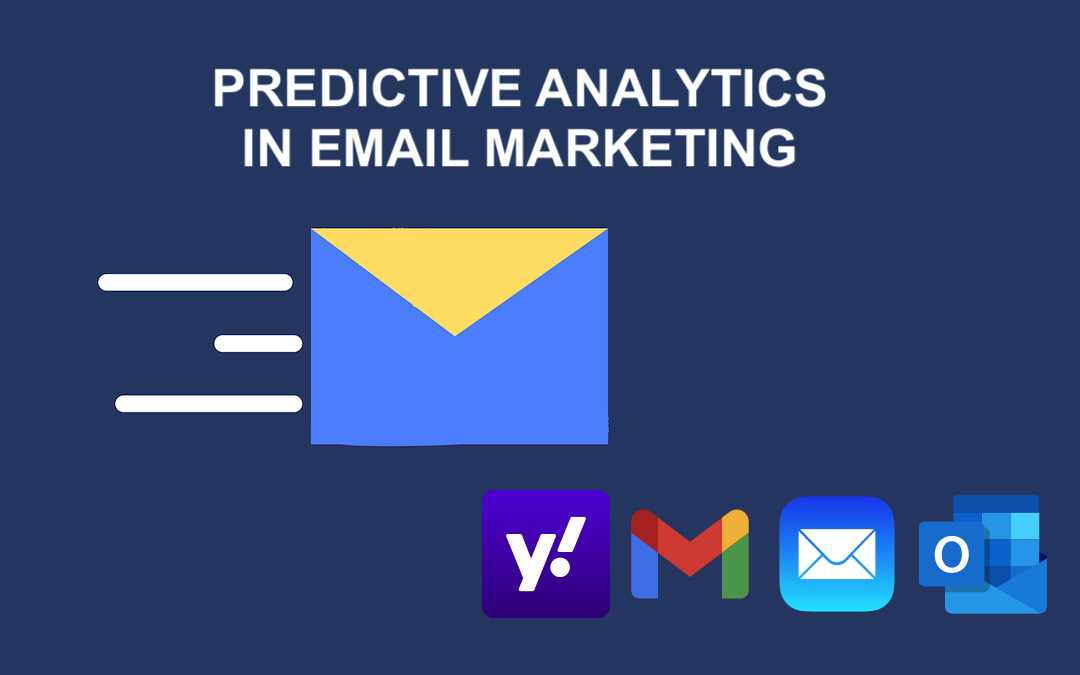
Predictive analytics is revolutionizing the world of email marketing. By harnessing the power of artificial intelligence (AI), businesses can anticipate customer behavior, making their marketing efforts more effective and personalized. Understanding customer behavior has never been more critical in an era where competition for consumer attention is fierce. So, how can AI and predictive analytics transform your email marketing strategy? Let’s dive in and explore!
What is Predictive Analytics?
Predictive analytics refers to the use of statistical techniques, machine learning algorithms, and data mining to analyze historical data and predict future outcomes. It's like having a crystal ball, but much more scientific and reliable. This technology is used across various industries, from healthcare to finance, to foresee trends, behaviors, and events.
The Role of AI in Predictive Analytics
AI takes predictive analytics to the next level by enhancing its accuracy and efficiency. Machine learning algorithms, natural language processing, and other AI technologies can analyze vast amounts of data quickly and identify patterns that would be impossible for humans to detect. AI helps in refining models, ensuring they adapt and learn from new data over time.
Benefits of Predictive Analytics in Email Marketing
Improved Targeting
Predictive analytics enables marketers to segment their audience more effectively. By understanding past behaviors and preferences, marketers can create more targeted and relevant email campaigns and marketing decks, ensuring that the right message reaches the right person at the right time.
Increased Engagement
When emails are personalized and relevant, engagement rates soar. Predictive analytics helps in crafting content that resonates with the audience, leading to higher open and click-through rates.
Higher Conversion Rates
Ultimately, the goal of any marketing campaign is to convert prospects into customers. Predictive analytics aids in identifying the most promising leads and nurturing them through personalized content, increasing the likelihood of conversion.
Understanding Customer Behavior
To leverage predictive analytics effectively, understanding customer behavior is crucial. This involves collecting and analyzing data on how customers interact with your emails, website, and other digital touchpoints.
Methods to Gather and Analyze Data
Data can be gathered from various sources, including email interaction metrics, website analytics, social media engagement, and purchase history. Analyzing this data helps in understanding customer preferences, pain points, and purchasing behavior.
How Predictive Analytics Works in Email Marketing
Data Collection and Preprocessing
The first step is collecting relevant data. This includes email engagement metrics (like open and click rates), customer demographics, purchase history, and more. The data is then cleaned and preprocessed to ensure accuracy.
Modeling and Analysis
Using machine learning algorithms, predictive models are created to analyze the data. These models can predict future behaviors, such as which customers are likely to open an email or make a purchase.
Implementation of Findings
Once the predictive models are in place, the insights gained are used to craft and optimize email campaigns. This can include personalizing content, adjusting the timing of emails, and segmenting the audience more effectively.
Key Metrics in Email Marketing
Understanding key metrics is essential for measuring the success of your email campaigns. The most important ones include:
Open Rates
Open rate is a metric that indicates the percentage of recipients who open your email. It’s a good indicator of how effective your subject lines are.
Click-Through Rates
This is one of the efficient metrics to measure the success of the campaign. It measures the percentage of recipients who clicked on a link within your email.
Conversion Rates
Conversion rates indicate the percentage of recipients who completed a desired action, such as making a purchase or signing up for a webinar, after clicking through your email.
Video Ads and Predictive Analytics
Video content is highly engaging. Predictive analytics can help determine which segments of your audience are most likely to respond positively to video ads in emails, boosting visibility, engagement and conversion rates.
By analyzing data on past interactions with video content, predictive analytics can forecast how future video ads will perform, allowing you to optimize your video marketing strategy.
Leveraging Social Media Data
Social Media Insights for Email Campaigns
Social media provides a wealth of data on customer preferences and behavior. This data can be integrated with email marketing strategies to create more cohesive and effective campaigns.
Cross-Channel Analytics
Combining data from social media and email marketing allows for a more comprehensive understanding of customer behavior. Predictive analytics can use this combined data to enhance the effectiveness of both channels.
Challenges and Limitations
With increasing concerns over data privacy, it’s essential to handle customer data responsibly and comply with regulations such as GDPR. Transparency and consent are key.
Furthermore, implementing predictive analytics requires technical expertise and resources. It’s important to have the right tools and a skilled team to manage and interpret the data effectively.
Share this post
Leave a comment
All comments are moderated. Spammy and bot submitted comments are deleted. Please submit the comments that are helpful to others, and we'll approve your comments. A comment that includes outbound link will only be approved if the content is relevant to the topic, and has some value to our readers.

Comments (0)
No comment